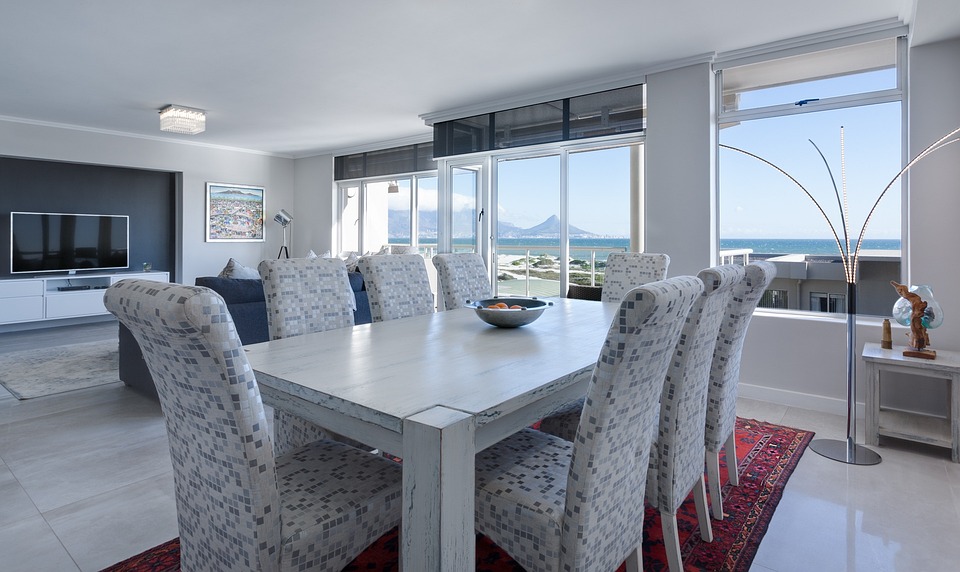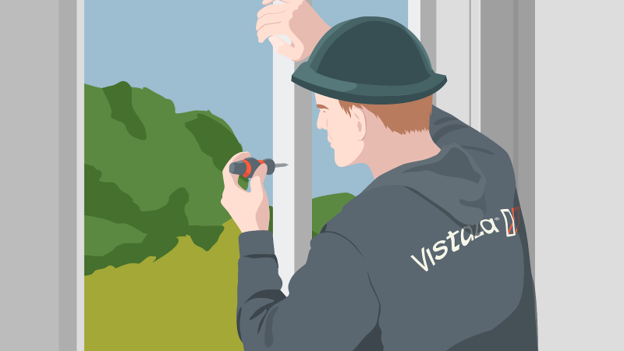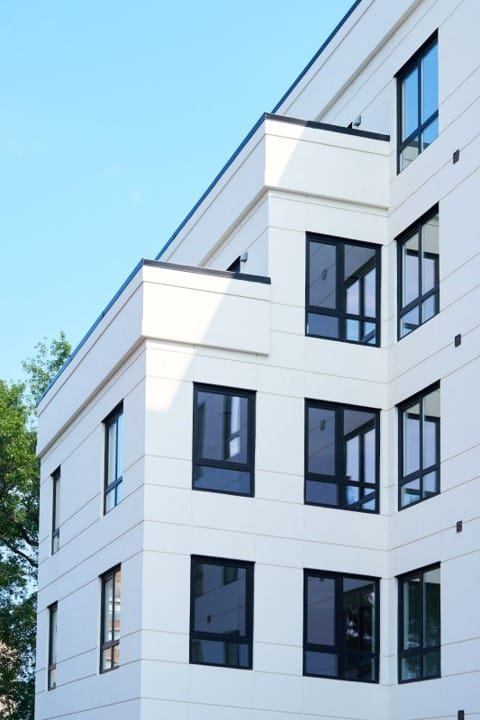Window installation can be approached from both inside and outside, with the choice heavily depending on various factors that influence the efficiency, safety, and practicality of the installation process.
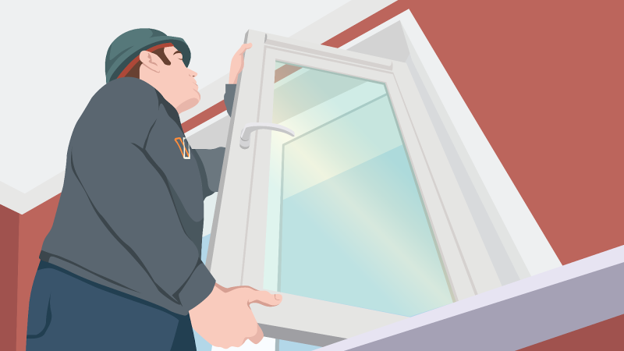
Here’s a breakdown of considerations:
-
Installation Environment:
-
In colder climates, inside installation is preferred to prevent cold air intrusion.
-
Warmer climates benefit from outside installations for better airflow.
-
-
Window Type and Access:
-
Casement windows, opening outward, are easier to install from the outside.
-
Double-hung windows, opening inwards, favor inside installations.
-
Lack of external access necessitates inside installations.
-
-
Installation Challenges and Advantages:
-
Inside installations are quicker but may face obstacles like blocked paths or difficulties in achieving level installation.
-
Outside installations offer easier positioning and street visibility but may struggle with sealing.
-
4 Factors Affecting External vs Internal Window Installation
When considering whether windows are installed from inside or outside, several factors play a crucial role in determining the most suitable approach for a window replacement project.
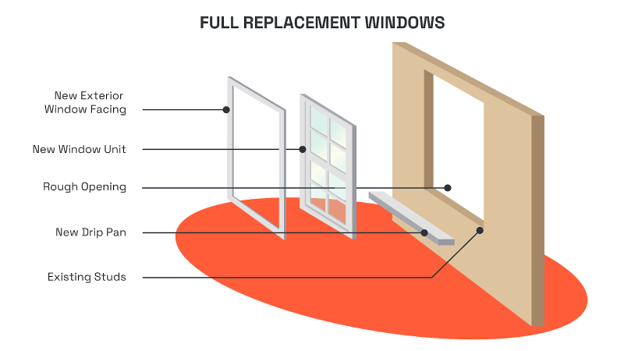
These factors ensure the balance between aesthetics, performance, and energy efficiency, ultimately affecting the installation method.
New or Replacement Windows
-
For existing buildings, replacement windows might be more efficiently installed from the outside to avoid clutter and potential damage to the homeowner’s property.
-
In uninhabited buildings, the choice between inside or outside installation is less critical, allowing other factors to influence the decision.
Type of Window
-
Certain types of windows, such as casement windows, are easier to install from the outside due to their outward opening mechanism.
-
Conversely, double-hung windows, which open inwards, are typically easier to install from the inside, reducing the risk of damage and ensuring a smoother installation process.
Window Location
-
Safety concerns and accessibility play a significant role in determining the installation method, especially for windows located on higher floors where outside installation might pose greater risks.
Climate Conditions
-
In colder climates, inside installations are preferable to minimize exposure to harsh weather conditions and ensure the comfort of the installation crew and the building’s inhabitants.
-
Warmer climates may allow for more flexibility, with outside installations offering better airflow and less disruption to the interior space.
These factors underscore the importance of a tailored approach to window installation, emphasizing the need to consider the specific requirements of each project to achieve optimal results in terms of energy efficiency, safety, and aesthetic appeal.
New or Replacement Windows
Choosing between new-construction and replacement windows significantly influences the installation process, each catering to different scenarios based on the condition of the existing window frame and the wall system. Here’s a breakdown to help decide which suits your project:
New-Construction Windows
-
Application: Ideal for extensive remodeling or new construction where walls are being built.
-
Features: Equipped with nailing fins or flanges for attachment to the exterior wall.
-
Availability: Found in home centers, limited size options.
-
Installation: Requires removal of the existing window frame and trim, allowing for structural repairs and enhancing energy efficiency.
Replacement Windows
-
Application: Best for updating existing windows without altering the wall structure.
-
Features: Smooth-sided, designed for easy insertion into the existing frame.
-
Availability: Typically require special ordering.
-
Installation: Faster and more cost-effective, fits within the existing frame but may not address underlying structural issues.
Understanding these differences is crucial for a successful window replacement project, ensuring the choice aligns with both the practical and aesthetic needs of the building.
Type of Window
Regarding window installation, the type of window plays a pivotal role in determining whether the installation will be conducted from the inside or outside.
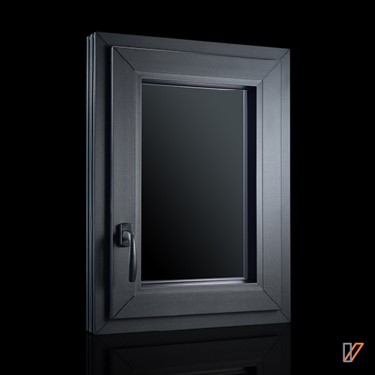
Different window styles not only influence the aesthetic appeal but also impact the installation process due to their unique characteristics.
-
Bay & Bow Windows: These windows extend outward from the home, providing extra space and light. Due to their complexity and the way they project out, they often require external installation to ensure proper sealing and support.
-
Casement Windows: Known for their crank-operated opening mechanism that swings the window inwards, casement windows are typically easier to install from the inside. This approach is especially recommended for uPVC windows.
-
Double Hung and Single Hung Windows: These windows slide vertically, with double-hung windows allowing both the upper and lower sashes to move. Single hung windows have a stationary upper sash. Given their design, these windows can be installed from the inside, which makes the process less intrusive and reduces the risk of exterior damage.
-
Single Slider Windows: Operating by sliding horizontally, single slider windows can be installed from either inside or outside. However, inside installation is often preferred for its convenience and the ability to avoid exterior obstructions.
Each window type presents its own set of installation considerations, emphasizing the importance of understanding the specific requirements and challenges associated with the chosen window style.
Window Location
When considering the location of window installation, whether from the inside or outside, two primary factors come into play: the floor on which the window is located and the safety considerations associated with it.
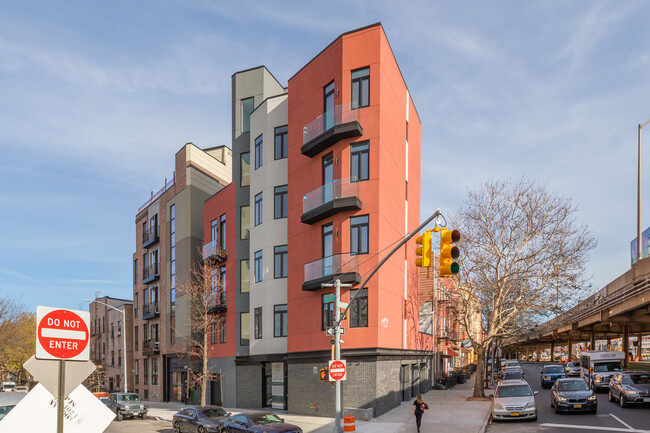
Ground Floor Windows
-
Easier access from both inside and outside.
-
Lower risk of injury during installation.
-
Flexibility in choosing installation methods based on other factors such as window type and climate conditions.
Second/Third Floor Windows
-
Outside installation may require scaffolding or special equipment, increasing the complexity and cost .
-
Inside installation can mitigate these challenges but may be restricted by interior space and the need to protect indoor areas.
Multistory Building Windows
-
Multistory building window safety in the 2018 IECC involves meeting U-factor and SHGC requirements based on NFRC standards, varying by climate zone, with no specific glazing limits.
-
The UA Alternate Method permits tradeoffs between building elements while capping fenestration performance, like a maximum U-factor of 0.40 in Northern climate zones.
-
Safety Considerations:
-
The risk of falling or dropping tools/materials increases with height, making safety a paramount concern.
-
Proper safety gear and precautions are essential, especially for outside installations on higher floors.
-
Climate Conditions
Climate conditions significantly influence the window installation process, affecting everything from the materials used to the safety of the installation crew.

Here’s how various weather conditions can impact the process:
Cold Weather Challenges
-
Sealant and adhesive effectiveness is reduced, needing a minimum temperature for proper curing and bonding, leading to weak seals.
-
Materials like vinyl and aluminum contract, causing gaps and drafts, reducing energy efficiency.
-
Installation efficiency and safety decrease, with heightened risks of accidents.
Hot Weather Complications
-
Sealants and adhesives may cure too quickly, hindering proper window positioning.
-
Window materials may expand, causing warping or distortion and affecting long-term performance.
-
Worker safety is compromised due to risks of dehydration and fatigue, increasing accident risks.
Wet Conditions
-
Compromised seals from trapped water between the sealant and window frame or wall.
-
Installation delays as work must pause for weather clearance.
-
Increased accident risks from slippery conditions.
-
High humidity slows the curing process of sealants and adhesives and can cause condensation damage over time.
Considerations with Inside Window Installations
When installing windows from the inside, several considerations are essential to ensure the process is smooth, safe, and results in a well-installed window. Here are key points to keep in mind:
Preparation and Safety
-
Clear the installation area inside the house to provide ample working space.
-
Use shims to guarantee the window is level, preventing future issues with air leaks or drafts.
Installation Process
-
Measure and order the correct window size, allowing for a ½” gap for expansion.
-
Follow manufacturer instructions closely to ensure warranty coverage.
-
Secure the window using fasteners near each corner for stability.
-
Apply sealant to the nailing flange before setting the window, ensuring a tight seal.
Post-Installation
-
Test the window operation by opening, closing, and locking it to check for proper function and alignment.
-
Finish with trim, putty, and paint to seal and beautify the installation area.
Let Vistaza Help with Professional Window Replacement and Installation
Vistaza, with over 10 years of experience in window installation and replacement, remains a standout in the industry, offering tailored services to meet the varied needs of general contractors and developers.
Get in touch with Vistaza if you wish to know more about window installation.

